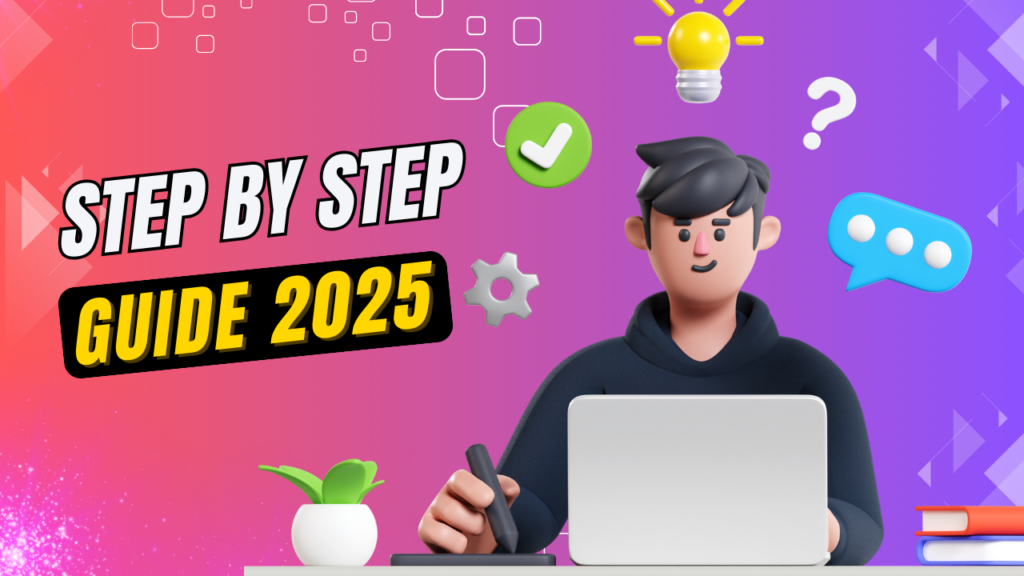When you think about blogging, you close your eyes and see money falling everywhere. But, your dream shatters all of sudden when you make the most common blogging mistakes.
You create great content, do everything you think that’s enough to make you a millionaire but when it’s time to get the results, you fail.
That’s because you make same blogging mistakes that everyone is making and you don’t even realize this.
In this article, we are going to explore, what are the most common mistakes and how to avoid them.
Blogging is more than just writing content and hitting “publish.”
To build a successful blog, you need to strategically plan, optimize, and engage with your audience.
However, even experienced bloggers can fall into traps that can derail their progress.
I will walk you through some of the most common blogging mistakes and offer tips on how to avoid them, helping you create a blog that thrives.
Let’s get started!
Mistake 1: Lack of a Clear Niche
Choosing the right niche is crucial for the success of your blog.
A niche gives your blog a clear focus, helping you attract a targeted audience that is interested in your content.
Without a niche, your blog might seem too scattered, making it difficult to build a loyal readership.
Consequences of Being Too Broad or Too Narrow
- Too Broad: If your blog covers too many unrelated topics, it can confuse your audience and make it harder to establish yourself as an authority in any one area. For example, a blog that covers fashion, tech, and cooking may struggle to attract a dedicated readership.
- Too Narrow: On the other hand, if your niche is too specific, you may find it difficult to attract enough readers to sustain your blog. A blog focused solely on a very specific type of knitting pattern, for instance, might have limited appeal.
How to Properly Define and Focus on Your Niche
- Identify Your Passion: Start by identifying topics you are passionate about and have some expertise in.
- Research Market Demand: Use tools like Google Trends and keyword research to gauge the popularity of your niche.
- Evaluate the Competition: Study other blogs in your chosen niche to see how you can differentiate yourself.
- Focus on a Sub-Niche: If a niche is too broad, consider focusing on a sub-niche that still has enough demand but less competition.
Choosing the right niche is very critical. To help you choose the best one, I have created a detailed list of Most Profitable & Unique Blogging Niches in 2025.
Mistake 2: Inconsistent Posting Schedule
Consistency is key to building and maintaining a loyal readership.
Regularly updated blogs are more likely to retain visitors, rank higher in search engines, and establish authority in their niche.
Common Reasons for Inconsistent Posting
- Lack of Time: Many bloggers struggle to balance blogging with other responsibilities.
- Burnout: Without a content plan, you might run out of ideas or lose motivation.
- Overcommitting: Promising too much content too quickly can lead to missed deadlines and inconsistent posting.
Strategies for Maintaining a Regular Blogging Schedule
- Create a Content Calendar: Plan your content in advance to ensure you always have something ready to publish.
- Batch Writing: Write multiple posts at once and schedule them to be published over time.
- Set Realistic Goals: Start with a manageable posting schedule (e.g., once a week) and increase as you become more comfortable.
Mistake 3: Neglecting SEO Best Practices
Search engine optimization (SEO) is essential for increasing your blog’s visibility on search engines like Google.
By optimizing your content for search, you can attract more organic traffic and grow your audience.
Common SEO Mistakes
- Ignoring Keywords: Failing to research and use relevant keywords can make it difficult for search engines to understand and rank your content.
- Poor Meta Descriptions: Neglecting to write compelling meta descriptions can result in lower click-through rates from search engine results pages (SERPs).
- Unoptimized Images: Large, unoptimized images can slow down your site, negatively impacting user experience and SEO.
How to Implement Basic SEO Techniques Correctly
- Keyword Research: Use tools like Ahrefs or SEMrush to find keywords with high search volume and low competition, and incorporate them naturally into your content.
- On-Page Optimization: Include keywords in your titles, headers, and throughout your content. Also, ensure your meta descriptions are engaging and include the target keyword.
- Image Optimization: Compress images to improve load times, and use alt text to describe images, which helps with SEO.

Mistake 4: Poor Content Quality
Quality content is the backbone of any successful blog.
Poorly written, unoriginal, or irrelevant content can turn readers away and damage your blog’s credibility.
Common Pitfalls
- Poor Writing: Grammar errors, awkward phrasing, and lack of clarity can make your content difficult to read.
- Lack of Originality: Rehashing what’s already been said without adding value can make your blog redundant.
- Irrelevant Content: Failing to align content with your audience’s interests can lead to low engagement.
Tips for Creating High-Quality, Engaging Content
- Know Your Audience: Understand who your readers are and what they are looking for.
- Focus on Value: Ensure every post provides value, whether it’s through education, entertainment, or inspiration.
- Edit and Proofread: Always proofread your content before publishing to catch errors and improve readability.
- Use Visuals: Enhance your content with relevant images, infographics, or videos to make it more engaging.
Mistake 5: Failing to Promote Your Blog
Creating great content is only half the battle; promoting your blog is equally important.
Without promotion, even the best content may go unnoticed.
Common Promotion Mistakes
- Relying Solely on Organic Traffic: While organic traffic is valuable, relying on it alone can limit your reach.
- Ignoring Social Media: Social media platforms are powerful tools for driving traffic to your blog, yet many bloggers neglect to use them effectively.
Effective Promotion Strategies
- Leverage Social Media: Share your blog posts across social media platforms like Facebook, Twitter, Instagram, and LinkedIn. Engage with your audience by responding to comments and participating in relevant conversations.
- Email Marketing: Build an email list and send regular newsletters to keep your readers updated on new content.
- Guest Blogging: Write guest posts for other blogs in your niche to reach a broader audience and build backlinks to your site.
Mistake 6: Ignoring Audience Engagement
Engaging with your audience is essential for building a community around your blog.
When readers feel connected to you and your content, they are more likely to become loyal followers.
Common Engagement Mistakes
- Not Responding to Comments: Failing to reply to comments can make readers feel ignored and less likely to engage in the future.
- Lack of Interactive Content: Not providing opportunities for readers to interact with your content can limit engagement.
Techniques to Increase Engagement
- Respond to Comments: Take the time to reply to comments and questions on your blog and social media channels.
- Create Interactive Content: Use polls, quizzes, and surveys to encourage reader participation.
- Build a Community: Consider creating a Facebook group or online forum where readers can discuss topics related to your blog.
Mistake 7: Not Monetizing Your Blog Effectively
Monetizing your blog allows you to generate income from your efforts.
However, many bloggers either neglect monetization or rely too heavily on a single income stream, which can be risky.
Common Monetization Mistakes
- Relying on a Single Income Stream: Depending solely on ads or affiliate marketing can be limiting, especially if those income sources fluctuate.
- Inconsistent Monetization Efforts: Sporadic attempts at monetization may not yield significant results.
Diversifying Income Streams for Stability and Growth
- Affiliate Marketing: Promote products or services related to your niche and earn commissions on sales.
- Sponsored Posts: Partner with brands to create content that promotes their products or services.
- Sell Digital Products: Create and sell eBooks, online courses, or printables related to your niche.
- Membership or Subscription Models: Offer exclusive content or services to paying subscribers.
Mistake 8: Overlooking Analytics and Performance Metrics
Analytics provide insights into how your blog is performing and where improvements are needed.
Ignoring these metrics can result in missed opportunities to grow your blog.
Common Mistakes in Using Analytics
- Ignoring Key Metrics: Focusing solely on page views without considering engagement metrics like bounce rate or average session duration can give a skewed view of your blog’s performance.
- Not Setting Goals: Without clear goals, it’s difficult to measure success and make informed decisions.
How to Use Data to Improve Your Blog’s Success
- Set Clear Goals: Define what success looks like for your blog, whether it’s increasing traffic, boosting engagement, or growing your email list.
- Regularly Review Metrics: Use tools like Google Analytics to track key performance indicators (KPIs) and adjust your strategy based on the data.
- A/B Testing: Experiment with different headlines, formats, and content types to see what resonates best with your audience.
Mistake 9: Failing to Update and Refresh Content
Outdated content can negatively impact your blog’s credibility and SEO performance.
Regularly updating your content ensures it remains relevant and valuable to your readers.
Search engines prefer fresh, relevant content.
And, readers are more likely to engage with information that feels timely and accurate.
Regularly updating your content not only keeps it relevant but also gives you a chance to improve your content’s SEO, increase traffic, and boost your blog’s overall performance.
Consequences of Outdated Information
- Reduced Traffic: Outdated content may rank lower in search engine results, leading to a decline in organic traffic.
- Decreased Credibility: Providing outdated or incorrect information can damage your blog’s reputation and decrease reader trust.
- Lost Opportunities: You might miss out on new keywords, trends, or topics that could drive traffic to your blog.
Strategies for Regularly Updating Blog Content
- Content Audits: Regularly audit your blog content to identify posts that need updates. Focus on high-traffic pages first, as these will have the most significant impact when updated.
- Refresh Old Posts: Update old blog posts with new information, links, images, and keywords. This can help boost their rankings and make them more valuable to readers.
- Repurpose Content: Turn older content into new formats (e.g., videos, infographics, podcasts) to reach different audiences and breathe new life into existing content.
- Add New Insights: Include recent statistics, case studies, or industry developments to make your content more relevant and informative.
Mistake 10: Being Impatient with Results
Blogging success rarely happens overnight.
It takes time to build a following, gain traffic, and see financial returns.
Many bloggers give up too soon because they don’t see immediate results, but patience and persistence are key.
The Pitfalls of Expecting Immediate Success
- Unrealistic Expectations: Expecting rapid growth can lead to frustration and burnout, especially if you compare your progress to established blogs.
- Short-Term Focus: Chasing quick wins may lead you to compromise on content quality, consistency, or authenticity, which can hurt your blog in the long run.
Tips for Staying Patient and Persistent
- Set Realistic Goals: Break down your long-term vision into smaller, achievable milestones. Celebrate these small wins to stay motivated.
- Focus on Quality: Prioritize creating high-quality content that provides value to your readers, even if growth is slow at first.
- Track Progress: Use analytics to track your growth over time. Focus on trends rather than day-to-day fluctuations to see the bigger picture.
- Stay Consistent: Consistency in posting and promotion will eventually pay off, as search engines and readers begin to recognize your blog as a reliable source of information.
Blogging is a journey that requires careful planning, consistent effort, and a willingness to learn from mistakes.
By avoiding these common blogging mistakes—such as neglecting SEO, failing to engage your audience, and being impatient with results—you can set your blog on a path to long-term success.
What Do You Think?
Now, I’d like to hear from you.
Which blogging mistakes did you make in your journey?
Let me know in the comments below.
FAQs
1. How can I recover from a blogging mistake?
The first step is to identify the mistake and understand its impact. Once you’ve done that, take corrective actions, such as updating outdated content, improving SEO practices, or engaging more with your audience. Learning from your mistakes is crucial for continuous improvement.
2. What are the most critical factors for long-term blogging success?
Consistency, quality content, effective SEO practices, audience engagement, and a clear niche are the most critical factors for long-term blogging success.
3. Is it possible to avoid all blogging mistakes?
While it’s impossible to avoid all mistakes, being aware of common pitfalls and staying informed about best practices can help you minimize them. Mistakes are also valuable learning opportunities that can help you grow as a blogger.
4. How often should I check my blog’s analytics?
It’s a good practice to check your analytics weekly or bi-weekly to track performance trends. However, avoid obsessing over daily fluctuations, as they can lead to unnecessary stress.
5. Can I change my niche if I realize I’ve made a mistake in choosing it?
Yes, it’s possible to change your niche if you find that your current one isn’t working for you. However, it’s important to make the transition carefully to avoid alienating your existing audience. Gradually introduce new topics while phasing out old ones, and consider rebranding if necessary.
6. What are some common mistakes to avoid when writing a blog?
- Not Knowing Your Audience: Writing without a clear understanding of your target audience can lead to content that doesn’t resonate with readers. Always tailor your content to meet the needs and interests of your audience.
- Neglecting SEO: Failing to optimize your posts for search engines can result in low visibility and traffic. Use keywords strategically, optimize images, and write compelling meta descriptions.
- Overloading Posts with Ads: While monetization is important, too many ads can make your blog look cluttered and distract from the content. Balance is key.
- Poor Formatting: Long blocks of text without subheadings, bullet points, or images can overwhelm readers. Break up your content to make it more digestible and visually appealing.
- Ignoring Analytics: Not tracking your blog’s performance means you’re missing out on valuable insights that could help improve your content and strategy.
7. What makes a blog fail?
- Lack of Consistency: Inconsistent posting schedules can cause readers to lose interest and search engines to lower your ranking, reducing your visibility and growth potential.
- Poor Content Quality: Low-quality content that lacks originality, depth, or relevance can quickly turn readers away and harm your blog’s reputation.
- Ignoring Audience Engagement: Failing to interact with your audience by responding to comments or social media engagement can result in a lack of community and loyalty.
- Not Having a Clear Niche: A blog that tries to cover too many topics without a clear focus can confuse readers and dilute your brand, making it hard to attract a dedicated audience.
- Overemphasis on Monetization: Blogs that prioritize monetization over providing value to readers can lose credibility and trust, leading to decreased traffic and engagement.
8. What are the don’ts of blogging?
- Don’t Plagiarize Content: Always create original content or properly cite sources when referencing others’ work. Plagiarism can damage your credibility and result in legal issues.
- Don’t Ignore Reader Feedback: Reader comments and feedback provide valuable insights. Ignoring them can lead to missed opportunities for improvement.
- Don’t Stuff Keywords: Overloading your content with keywords to manipulate search rankings (keyword stuffing) can lead to penalties from search engines and reduce readability.
- Don’t Neglect Mobile Optimization: A significant portion of your audience is likely accessing your blog from mobile devices. Failing to optimize your blog for mobile can lead to a poor user experience and lower rankings.
- Don’t Skip Proofreading: Publishing content with grammatical errors, typos, or factual inaccuracies can harm your credibility and distract from your message.
9. What is the most common mistake for first-time bloggers?
- Expecting Immediate Success: One of the most common mistakes for first-time bloggers is expecting quick results. Blogging is a long-term commitment that requires patience, consistency, and continuous effort. It’s easy to get discouraged if you don’t see immediate traffic or income, but success in blogging typically builds gradually over time.
- Neglecting to Build an Email List: Many new bloggers focus solely on generating traffic without building an email list. An email list is crucial for retaining readers and driving repeat traffic, and it’s often more reliable than social media followings that can be affected by algorithm changes.
- Overcomplicating the Process: First-time bloggers often try to perfect every aspect of their blog from the start, leading to overwhelm and burnout. It’s important to focus on creating content and gradually improving your blog’s design and functionality.
- Ignoring the Importance of Branding: Failing to establish a consistent brand identity from the beginning can make your blog forgettable. This includes your blog’s name, logo, color scheme, and tone of voice, all of which contribute to how your audience perceives you.



